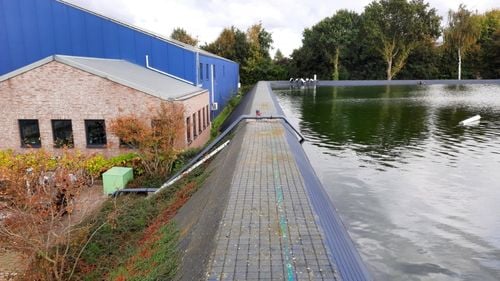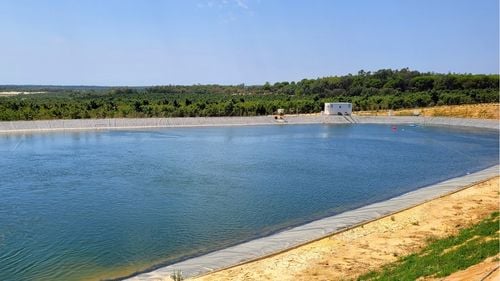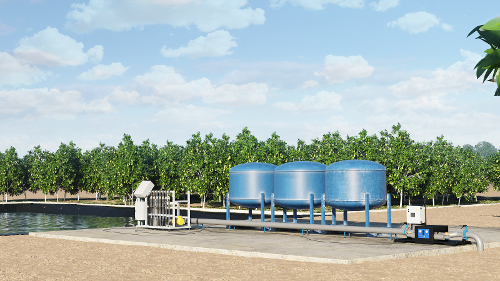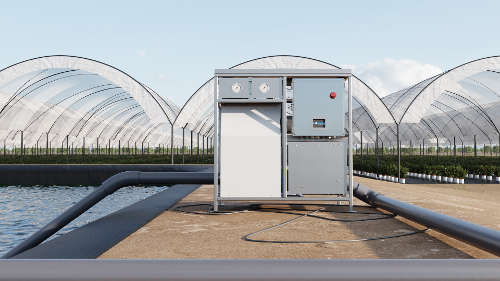Growers are not only seeing benefits in their reservoirs but also in their crops. These case studies share the results of growers using nanobubble treatment on their reservoirs.
A blueberry farmer in Mexico had challenges with algae in his irrigation pond that resulted in poor water quality and emitter clogging. After applying nanobubble technology to his reservoir, he not only saw improvements in his reservoir but also benefits to the blueberry crops.
Watch the video to learn more.
Two growers in Chile improved their crops using Moleaer's nanobubble technology. Nanobubbles helped the cherry grower improve root zone conditions that led to better fruit development. The avocado grower installed nanobubble technology on their irrigation reservoir to control algae. They achieved reduce algae growth and better water quality, which ultimately improved plant growth and fruit production.
Watch the video to learn more.
A blueberry farmer in Mexico had challenges with algae in his irrigation pond that resulted in poor water quality and emitter clogging. After applying nanobubble technology to his reservoir, he not only saw improvements in his reservoir but also benefits to the blueberry crops.
Watch the video to learn more.
Two growers in Chile improved their crops using Moleaer's nanobubble technology. Nanobubbles helped the cherry grower improve root zone conditions that led to better fruit development. The avocado grower installed nanobubble technology on their irrigation reservoir to control algae. They achieved reduce algae growth and better water quality, which ultimately improved plant growth and fruit production.
Watch the video to learn more.

Algae growth, waterborne pathogen proliferation and water scarcity are all factors that impact crop management and plant growth, leading to crop loss. Nanobubbles are a sustainable, chemical-free tool for growers who use water storage basins or reservoirs to combat:

Nanobubbles increase water’s oxidation-reduction potential (ORP) or water’s ability to clean itself, resulting in higher quality irrigation. When nanobubble-treated source water is pumped into greenhouses or inline irrigation systems, fewer chemicals are needed to clean the water. Reduced chemistry, including Hydrogen Peroxide (H2O2) and ozone (O3), is not only more sustainable but also more cost-effective for growers.
Download Case Study
Nanobubble technology is highly efficient at increasing dissolved oxygen (DO) concentrations throughout the water column, improving water quality, encouraging beneficial bacteria, and limiting the environment for algae and waterborne pathogens to thrive. Chemical-free nanobubbles also produce a mild oxidant that naturally lyses bacterial cells and inactivates microalgae. Nanobubbles physically scour biofilm and coat the surfaces of irrigation systems to prevent it from reforming.
Our Products
Nanobubbles are stable in water for months, producing a myriad of benefits in irrigation source water delivered to crops. Increased DO levels result in better root and plant development, improved plant resilience to environmental stressors and increased nutrient uptake efficiency. This all leads to improved crop quality and for some growers, increased yields.
Read Our BlogA greenhouse tomato grower in the Netherlands, Prominent Grevelingen deployed Moleaer’s Clear nanobubble generator to treat their 2-million-gallon irrigation reservoir. Nanobubbles improved the water quality inside the reservoir resulting in a significant reduction in backflushing and a 50% reduction in hydrogen peroxide for cleaning.
Freeman Herbs in Canada has a 6.1-million-gallon water basin that supplies irrigation water to their crops. After installing the Moleaer Clear nanobubble generator, they were able to reduce filter cleaning by 50% and saw reduced microbial counts. Also, they had a 50% higher H2O2 residual.
Increasing DO in irrigation water, especially during warmer months, can be challenging for many growers. By treating their irrigation source water, Biosabor in Spain increased DO from 8 to over 20 ppm, averaging in that range even during the summer months. This significant improvement in their 9.2-million-gallon reservoir led to improved water quality and root health.
Water quality in irrigation reservoirs and basins is important for plant health and crop quality. Read our blog to learn how nanobubbles are a sustainable, chemical-free tool to improve source water quality and reduce chemical applications to treat common issues like algae, biofilm and water-borne pathogens.
